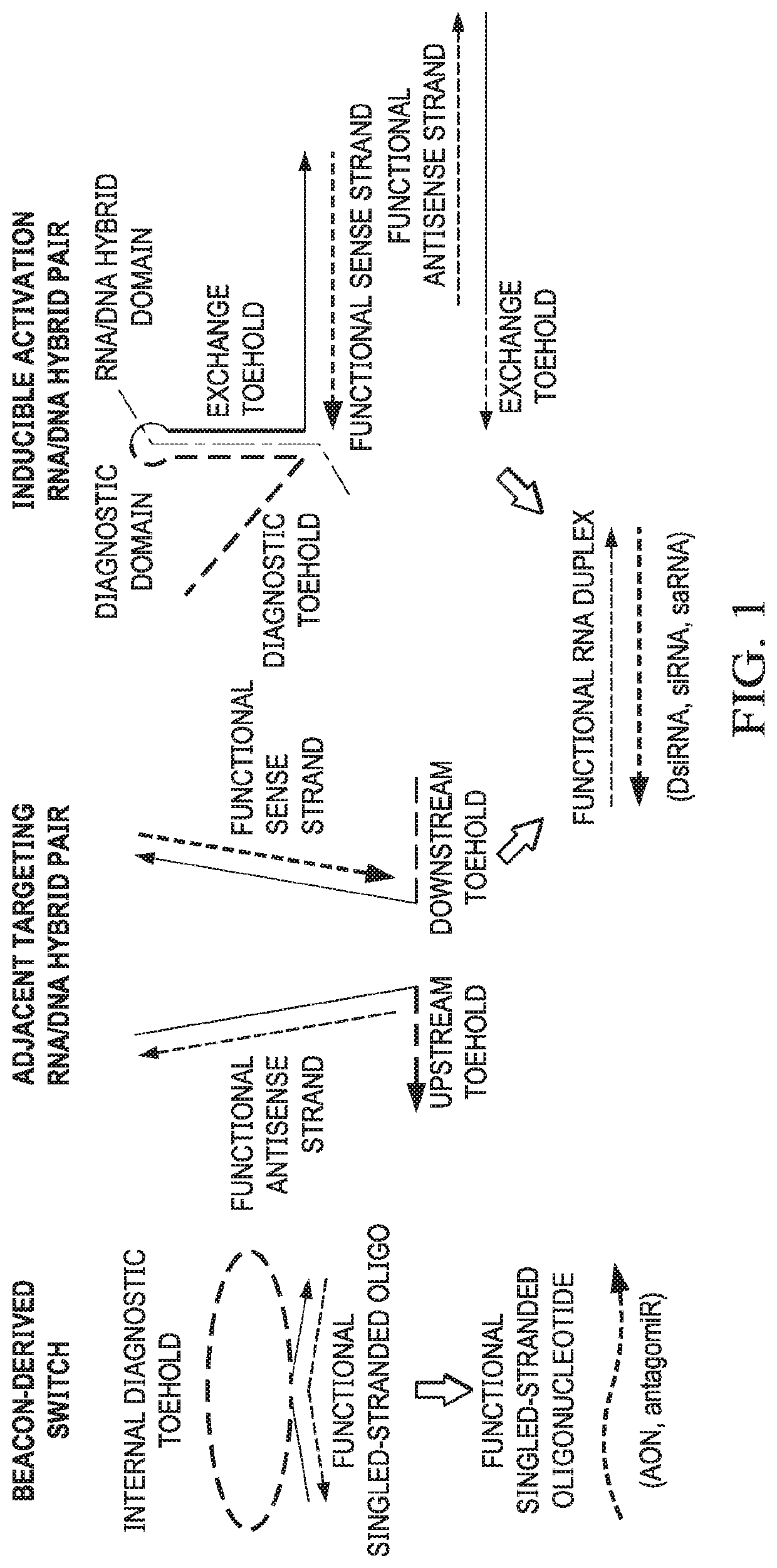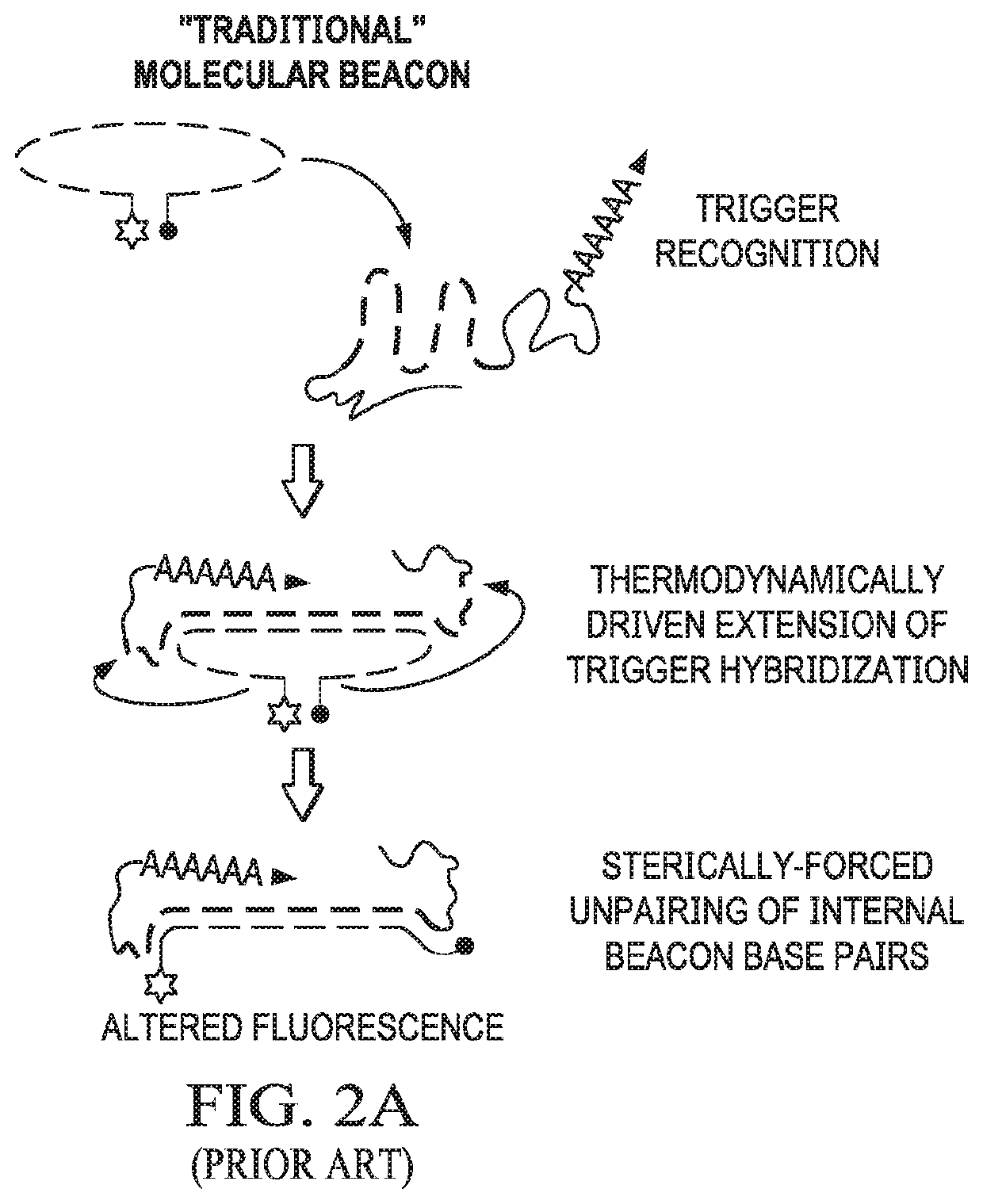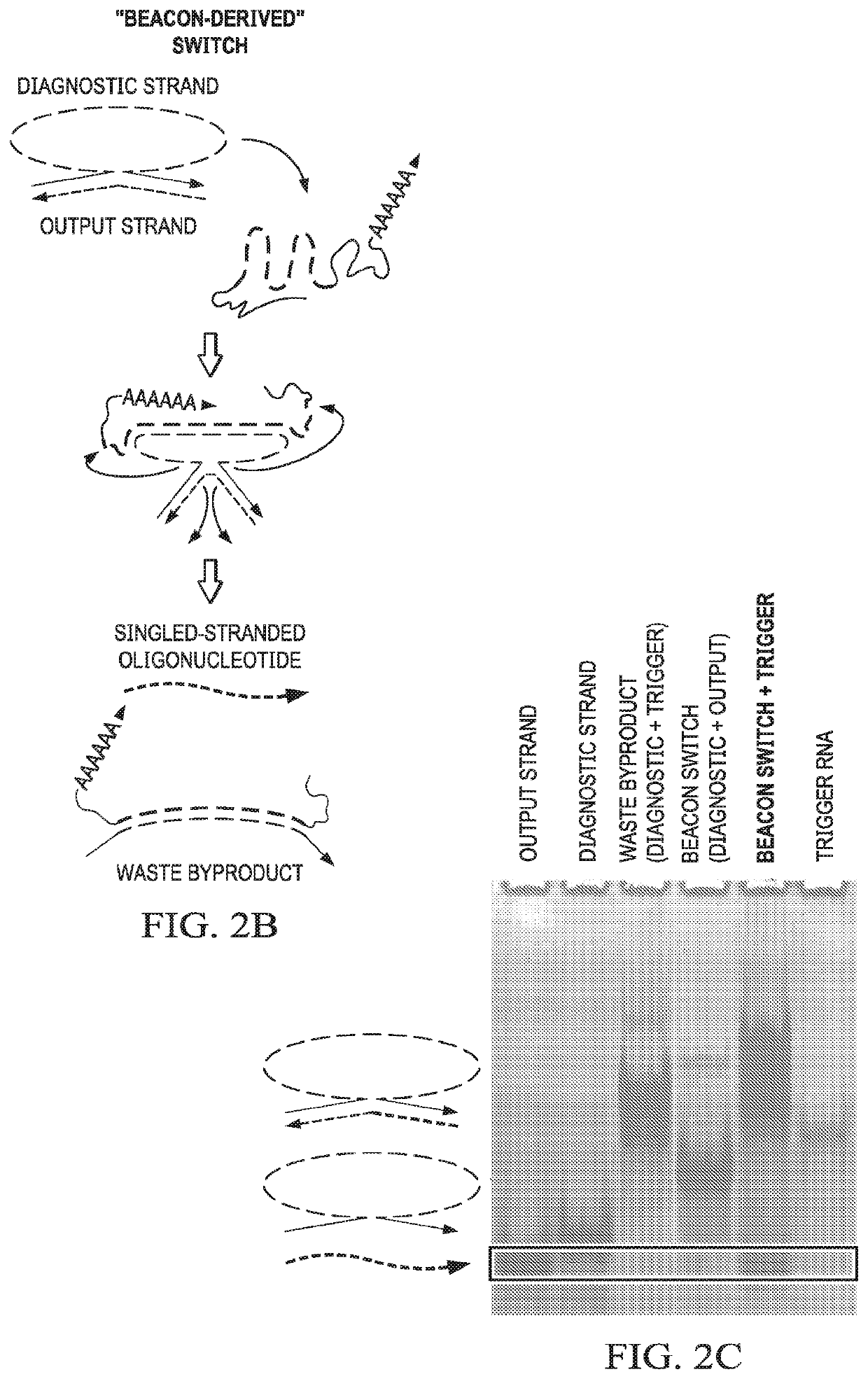Hybrid nucleic acid switches
- Summary
- Abstract
- Description
- Claims
- Application Information
AI Technical Summary
Benefits of technology
Problems solved by technology
Method used
Image
Examples
example 1
[0104]This example demonstrates that beacon-derived conditional switches according to embodiments of the invention release single-stranded oligonucleotides in the presence of an RNA target.
[0105]A beacon switch was designed to respond to a fragment of the KRAS mRNA (SEQ ID NO:61) as a trigger (i.e., KRAS trigger) and release an RNA antagomir output strand in a conditional fashion. Analysis of beacon switch assembly and conditional output release was performed by non-denaturing PAGE (see FIG. 2C). Assembly between the diagnostic strand and output strand to form the beacon switch was extremely efficient as determined by non-denaturing PAGE and total nucleic acid staining, with only trace amounts of the single-stranded output strands observed after assembly. Co-incubation of the assembled beacon switch with the KRAS trigger at 37° C. results in the release of the output strand and the appearance of a band corresponding to the expected waste product. A higher migrating band also appears...
example 2
[0108]This example demonstrates that strand exchange between RNA / DNA hybrid duplexes according to embodiments of the invention can be facilitated by toeholds that target adjacent sequence regions of an RNA target.
[0109]Cognate RNA / DNA hybrid pairs were previously designed that harbor split functional RNAs, devised to release a recombined functional dsRNA through recognition of complementary single stranded toeholds (FIG. 3A; Afonin et al., Nat. Nanotechnol., 8: 296-304 (2013); Afonin et al., Nucleic Acids Res., 42: 2085-2097 (2014); and Afonin et al., Nano Lett., 16: 1746-1753 (2016)). The separated single strands composing the functional duplex can be referred to as the sense strand and the antisense strand, and each of these RNA strands were annealed to a complementary DNA oligonucleotide. These assembled RNA / DNA hybrids are denoted as the sense hybrid (sH) and the antisense hybrid (all), respectively. The “traditional” approach to cognate hybrid design utilized complementary sing...
example 3
[0113]This example demonstrates that strand responsive structural element can act to conditionally induce strand exchange between RNA / DNA hybrids.
[0114]In an alternative approach for the implementation of conditional function within an RNA / DNA hybrid system, hybrid pairs were designed in which the accessibility of the toehold(s) needed to facilitate strand exchange was altered based on the presence or absence of a specific RNA target sequence. Although the adjacent targeting hybrid system described above performs its designed conditional function to release dsRNA, the fraction of dsRNA release for the best performing hybrid pair topped out at 0.67 after three hours. This second approach was pursued in an attempt to improve the efficiency of strand exchange and increase conditional dsRNA release. The “traditional” RNA / DNA hybrid methodology requiring the hybridization of complementary toeholds to one another for strand exchange serves as the basis of the conditional activation. The s...
PUM
| Property | Measurement | Unit |
|---|---|---|
| Ratio | aaaaa | aaaaa |
| Threshold limit | aaaaa | aaaaa |
Abstract
Description
Claims
Application Information
 Login to View More
Login to View More - R&D
- Intellectual Property
- Life Sciences
- Materials
- Tech Scout
- Unparalleled Data Quality
- Higher Quality Content
- 60% Fewer Hallucinations
Browse by: Latest US Patents, China's latest patents, Technical Efficacy Thesaurus, Application Domain, Technology Topic, Popular Technical Reports.
© 2025 PatSnap. All rights reserved.Legal|Privacy policy|Modern Slavery Act Transparency Statement|Sitemap|About US| Contact US: help@patsnap.com



